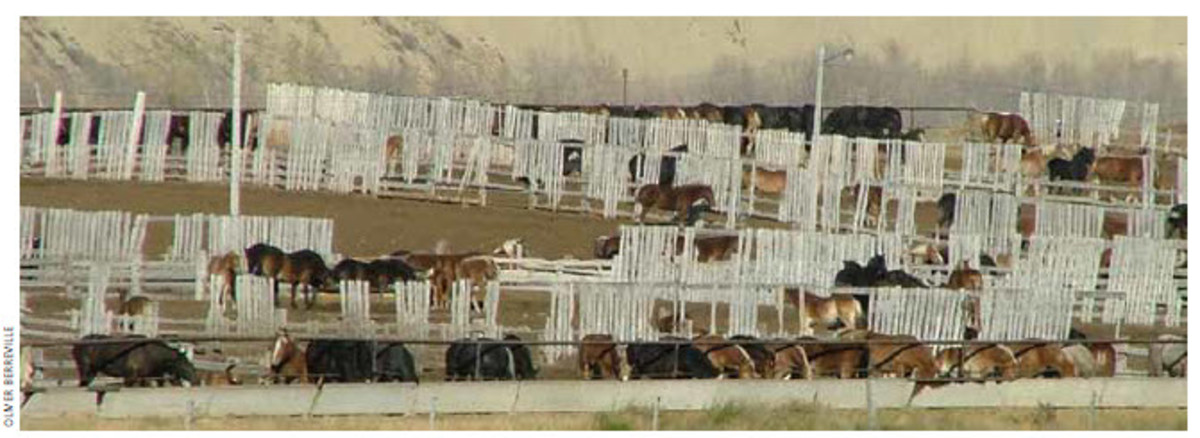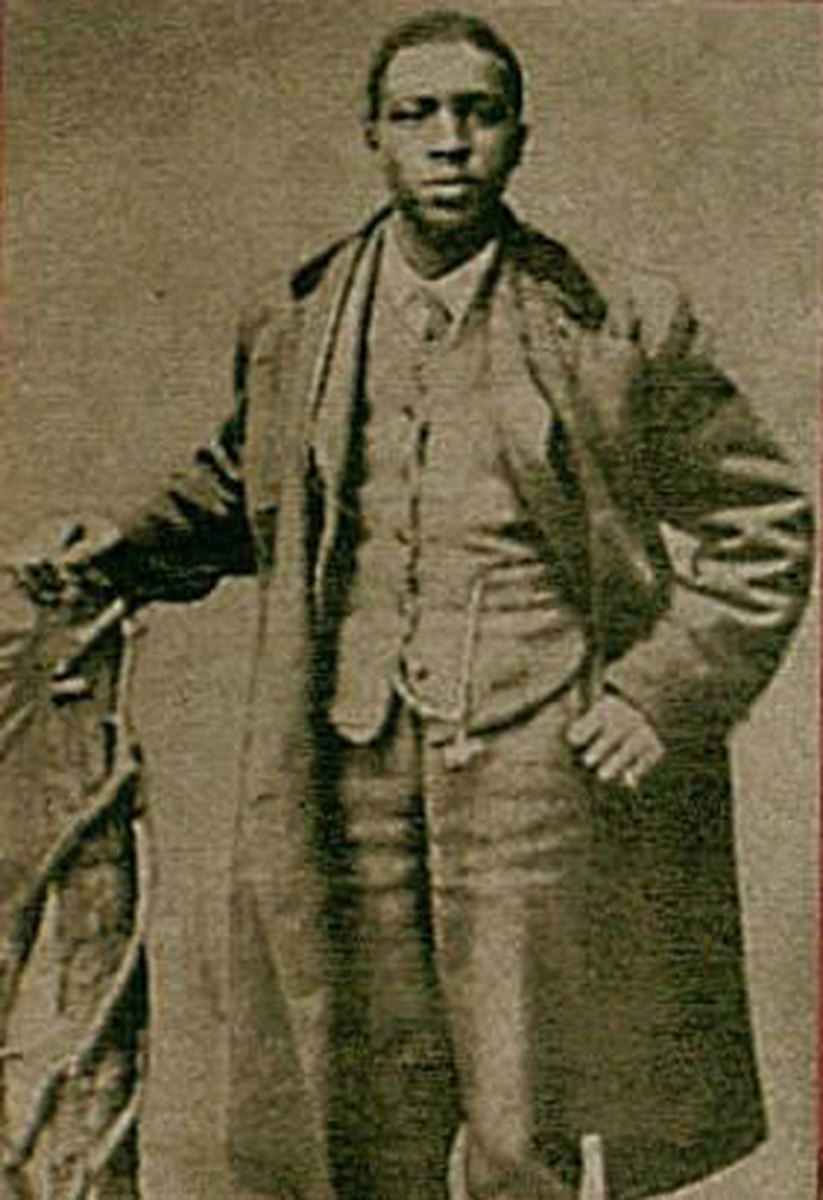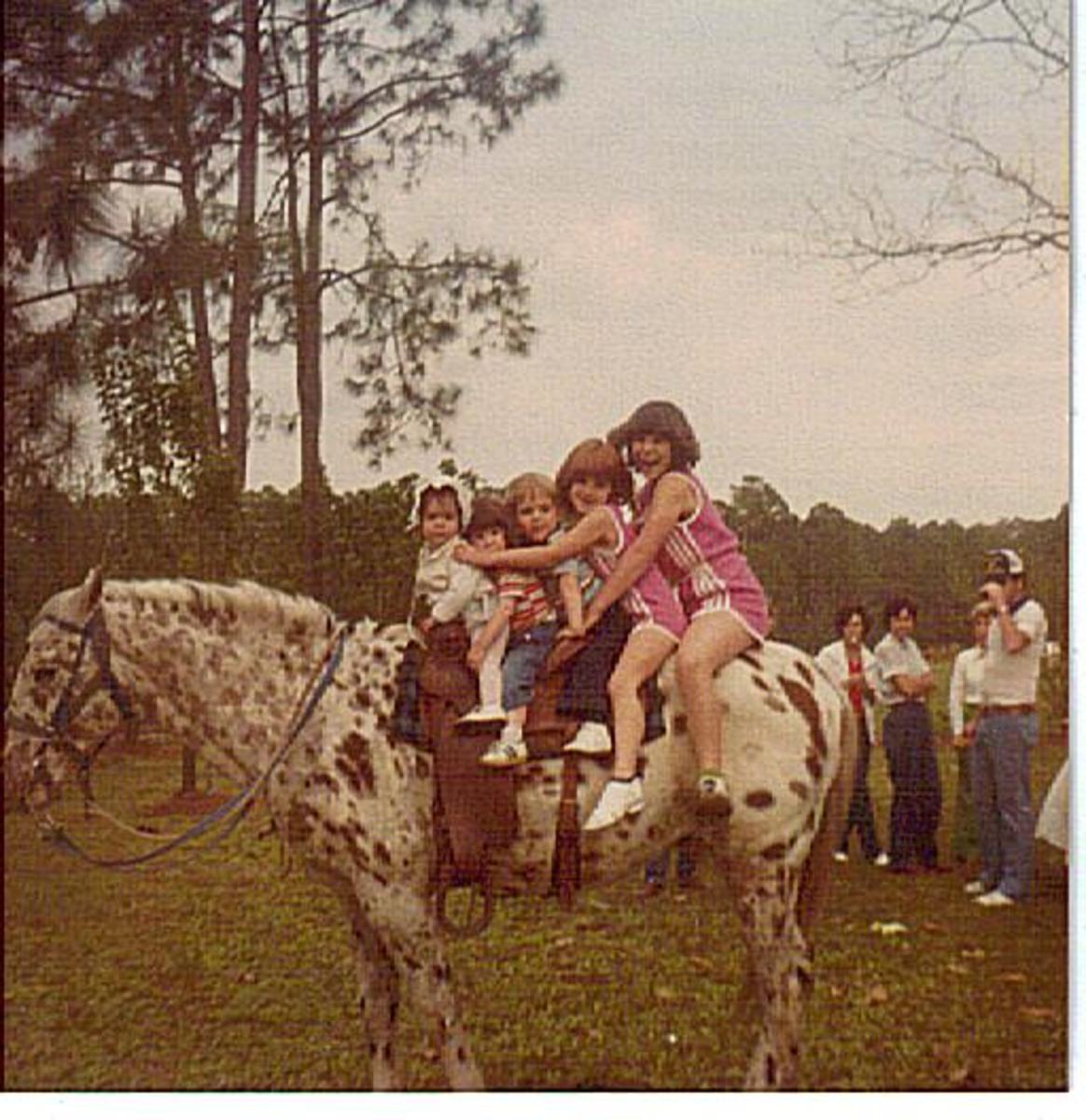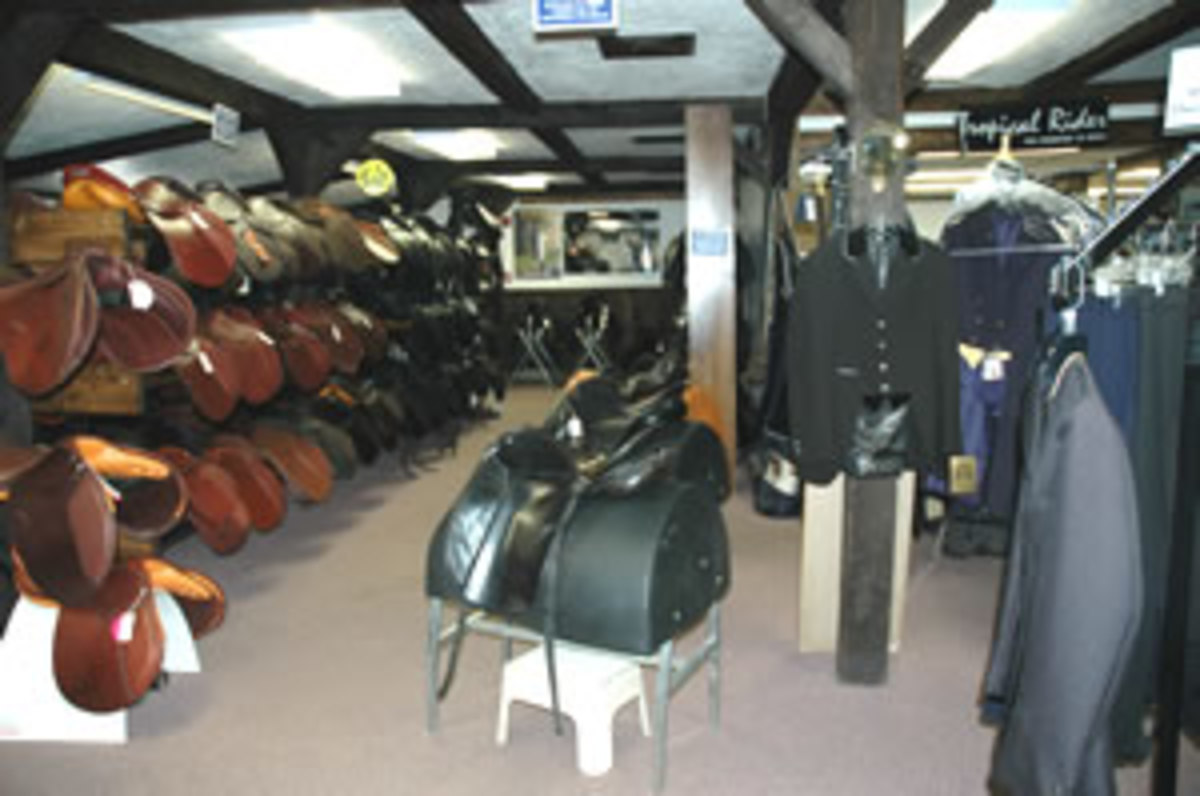The Recycling of an American Racehorse: From Slaughter to Rescue

Nothing moves me more than the sight of a thoroughbred race horse running at full gallop. It's what they're born to do. If they're not racing to the winner's circle, they're making more race horses to thrill and chill us, whether it's to the wagering window or just for the sake of watching them run. If that was all there is to the story, it would be a perfect world. We could just clink our julep glasses and wade through a vast sea of fashionable hats and stogie smoke to cash that winning ticket
Thoroughbred farms are an agricultural business, however, and not quite so interested in romanticism. Instead of turning out plant crops, they are turning out horse crops. About 37,000 thoroughbred foals are born and registered in North America every year on top of the approximately 140,000 worldwide. It doesn't take a mathematician to see there are more babies born each year than will ever see a winner's circle. Some may have a mediocre career, some will cost more to feed than they bring back in winnings. Others will not perform as studs or broodmares either. So what happens to all these breath-taking creatures when their racing career is over or never even begins?
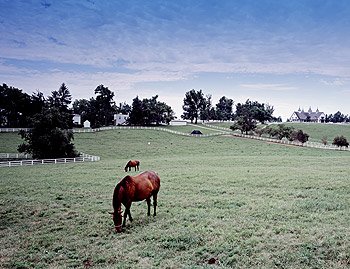
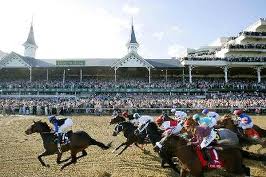
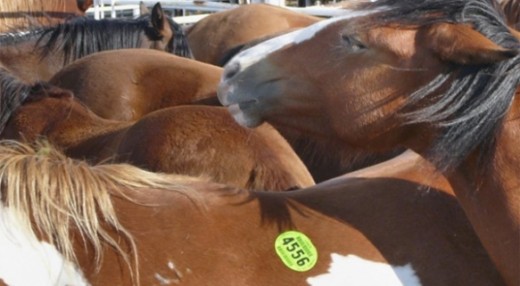
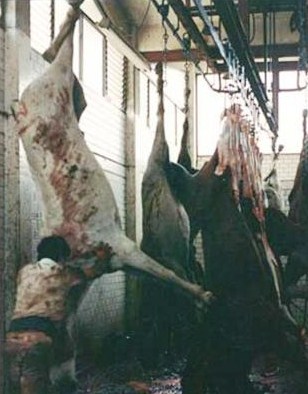
But There is Hope...
From Greats to Plates--The Road to the Slaughter House
I have to be completely honest. The larger part of me wanted to leave this section out and make this a nice happy read about how all race horses are recycled and rehabilitated into happy, normal horsey lives. What you're about to read, however, is not pleasant, and it's the side the racing industry talks about as little about as possible. Unfortunately it's part of this story, and a fairly large part at that. As John Steinbeck once quoted, and as a producer aptly repeated when commenting on this issue for PBS in Seattle, "It is in the things not mentioned that the untruth lies." I'm not writing this piece to lie to anyone.
It is an unfortunate part of the horse racing industry many would like swept under the rug regarding how many race horses are successfully recycled when their racing career is over. It begins to raise questions of accountability on a slippery slope of ambiguous perspectives. I will explain this further in a moment, however. The ugly truth is horses who do not perform to the standards necessary for the industry are sold to the highest bidder, no questions asked.
It doesn't sound so bad until you realize a lot of those highest bidders are slaughter houses who purchase and slaughter horses for human consumption. The American Humane Society reports that approximately 100,000 horses are sold for slaughter every year to slaughter houses in Canada and Mexico and the meat exported for consumption to Japan, Canada and Europe. . About 10% of those are racing thoroughbreds who haven't even reached their 5th year of age. Considering horses live into their 20s, those are lives cut very short.
Also take into consideration that President Obama recently signed a bill (H.R. 2112) on November 18, 2011 that made commercial slaughter of horses once again legal in the United States for the first time since 2006 regardless of this 2008 campaign promises not to do so. There are some taxation twists behind this bill as well. The fact that in a flagging economy this will turn even more horses into the kill pens, people should know their taxes will be subsidizing the foreign meat industry. Horses are not consumed as food in the United States, and 70% of Americans polled stated they are against the practice that they will now be monetarily supporting, most likely without their knowledge. This will not create a large increase in job opportunities. It would only mean a few extra workers hired here and there for relatively low pay. What it will do is increase horse theft and encourage people to throw in the towel and sell their horses off instead of re-homing them.
This is where we come back to the ambiguity issue. In many parts of the world, people would never imagine eating the family cat or dog, yet in other places it's viewed no differently than any other type of meat on the dinner table. Unfortunately for these thoroughbreds, even though they are held in a tentative position of esteem by many people in the western world, they are also viewed more closely as cattle or even deer when it comes to consumption of their flesh. As I said before, thoroughbreds are considered an agricultural commodity in the industry, but to someone, like me, who views them as something completely different, I couldn't take a mouthful of horseflesh if I was starving.
Before reading this article, were you aware so many are slaughtered?
Two Greats, Two Unfortunate Ends
Do you remember Ferdinand? He was the striking, well-bred son of Nijinsky II who won the 1986 Kentucky Derby. He died in a slaughterhouse in Japan 16 years later, no longer attractive to breeders as a stallion.
What about Exceller? He was the only horse ever to beat two Triple Crown winners – Seattle Slew and Affirmed in the 1978 Jockey Club Gold Cup. He died in a Swedish slaughterhouse in 1997.
So fame is a short measuring stick in the racing industry.
The Road to the Slaughter House is Paved with Good Intensions
This being said, there are breeders and trainers who are committed to seeing their animals are rehabilitated and recycled into different career paths. They recognize their responsibility and do their best. However, sadly, this is no insurance these horses still don't end up in kill pens. There are many stories of agreements ignored for the turn of a few dollars. Once a horse changes hands a few times, promises go forgotten.
Fortunately, there are many individuals and organizations committed to saving as many of these unfortunate animals as they are able. They are committed to monitoring the auction houses and cattle yards for those being sent to the kill pens. Most horses's second chances can be purchased for $200 plus fees. There are stories, unfortunately, of some yards raising that price simply to take advantage of the situation.
The Successful Stories of Recycled Race Horses
If you're still reading these words, and I hope you are, you've made it through the worst. There are many, many heartening and hopeful stories out there of race horses who have been and are being recycled into happy, useful and loving lives thanks to people who care.
Here are few stories about descendants of those glorified triple crown winners we cheered on to that final finish line to be showered in flowers, flashes, trophies and money. The only circle the horses in these stories were destined for was a dinner plate. And these are only a noteworthy few due to pedigree.

Bucky B Lucky Got Lucky
Bucky B Lucky, grandson of triple crown winner Seattle Slew was a winning thoroughbred at Auburn, WA's Emerald Downs. At the age of 4 he was discovered in the kill pen at an auction yard waiting to be shipped off to slaughter, until someone recognized he was well groomed, and wearing a brand new pair of racing shoes and checked his inner lip for the telltale tattoo. He's now at a horse rescue facility in Monroe, WA where he is being rehabilitated and learning how to be a horse for the first time. When he was initially let out with the other horses, he cowered by the gate too afraid to socialize.
Through care and patience, according to those rehabilitating Bucky, he has turned out to be a very calm and brave horse. He has a promising future now and will make someone an excellent riding horse.
You can watch more on Bucky's story here.
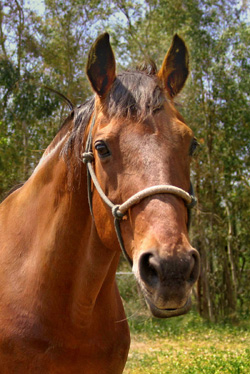
Straight Flush Wins By a Nose
Straight Flush's greatest claim to fame is being the brother of one of the most famous and revered horses in the world, Secretariat. Born in the heyday of Penny Chenery's Meadow Stables, he was also born into a tall shadow, Straight Flush didn't have much of a winning career as a racer. As a stud he was even less impressive and as time marched on his value declined steadily until he was considered worthless, just skin and bones, standing in a Texas cattle yard waiting to be trucked off for slaughter. Due to his relationship to Secretariat, someone decided to make one last effort to save him and offer him at auction one more time. Stephanie Diaz, horse enthusiast and racing writer, received an email explaining he was for sale. She ponied up $200 and placed a bid not really expecting to ever hear another thing about it. History took a different turn and Stephanie won the auction. Straight Flush was saved and shipped to a California ranch to live out his days. He is now 32 years old, which is beyond elderly for a horse, and still healthy and hearty. He still cavorts and plays.
Stardust Dancer: Lost 1 But then Won His Life Back
Recycle a Race Horse Into a Second Chance at Life
Thankfully, through the commitment and diligence of breeders, owners and trainers, responsibility is being taken by some in the thoroughbred racing industry to ensure these magnificent animals have a quality life regardless of their performance. Some tracks now donate to support rehabilitation and placement of horses no longer suitable for racing. Unfortunately, as you can see, even these intentions don't always pan out so well for the animals.
Hats off to those folks out there who selflessly and diligently look out for these animals and give them a second chance. This wasn't an easy article to write. I know it's not an easy one to read. It's my hope, however, that you will help spread the word that good horses out there are needing a second chance at life. There are organizations in every state who rescue and rehabilitate thoroughbreds. If you are wanting a horse, or if you are able to donate time, goods or funds to help them, I encourage you to contact them. At the very least, please pass this article to anyone you know who loves animals, loves horses, or who is a fan of thoroughbred racing. Save a life.
Do you plan to share this article with others to increase awareness?

Hubbing is fun! If you enjoy writing and want a great community to be part of at the same time, sign up!




